| |
|
|
December 7, 1941:
|
| |
0755 -
|
Military forces of Imperial Japan attack Pearl Harbor, HI
|
December 8, 1941:
|
| |
0600 -
|
Imperial Japanese forces invade the Philippines hours after the attack on Pearl Harbor (1800 on December 7th in Washington)
|
| |
1610 -
|
The United States of America declares war on Japan
|
January 5, 1943:
|
| |
-
|
The 511th Parachute Infantry Regiment (PIR) is established at Camp Toccoa, GA under thirty-six-year-old LTC Orin D. Haugen. Each volunteer/candidate is interviewed by an officer’s panel and by the time the regiment is fully formed, their average age (officers included) is just 21. Candidates also had to pass the Army’s General Classification Test (AGCT) with a score of 110 or higher, the same requirement for Officer Candidate School (OCS).
|
February 25, 1943:
|
|
|
-
|
The 11th Airborne Division is formed at Camp Mackall, NC under Major-General Joseph May Swing, three days before the general’s forty-ninth birthday.
|
May 16, 1943:
|
| |
-
|
800 male internees arrive are taken by train from the Santo Tomas internment camp to the Los Baños internment camp located on the grounds of the University of the Philippines’ College of Agriculture and UP College of Forestry (now the University of the Philippines Los Baños). The camp covered roughly 60-acres and sits between the foothills of Mount Makiling and the northern shore of Laguna de Bay. The men immediately begin “constructing” the camp around Baker Hall.
Click here to view the original camp notice posted at Santo Tomas regarding the transfer to Los Banos.
|
| |
-
|
Joining the group are "The Sacred Eleven", eleven US Navy nurses who had been stationed at the Cavite Naval Yards and helped the wounded during the invasion of Manila in 1941. They volunteered to transfer to Los Baños to help the original two doctors with the “hospital” there.
The Sacred Eleven consisted of:
Chief nurse, Laura Mae Cobb, Wichita, Kansas
Mary F. Chapman, Chicago, Illinois
Bertha R. Evans, Portland, Oregon
Helen C. Gorzelanski, Omaha, Nebraska
Rose Harrington, Elk Point, South Dakota
Margaret "Peg" A. Nash, Wilkes-Barre, Pennsylvania
Goldia "Goldie" A. O'Haver, Hayfield, Minnesota
Eldene E. Paige, Lomita, California
J. Pitcher, Des Moines, Iowa
LT(JG) Dorothy Still, Long Beach, California
Edwina Todd, Pomona, California
|
June 1943:
|
| |
-
|
The 511th PIR is sent battalion by battalion to Fort Benning’s Jump School where no member of the regiment refused to exit the plane and nearly all earned their parachutist’s badge.
|
Fall 1943:
|
| |
-
|
Gen. Swing directs Lt. James Polka to organize the Division’s Provisional Reconnaissance Platoon at Camp McCall. Polka selected men from throughout the Division based on their basic training skills, testing scores, general physical condition, I.Q., and a personal interview with each man (they were all described as “rugged outdoorsman”). The general duties of the volunteer reconnaissance unit were described, and Polka selected 35 men from those interviewed, as the initial group. His skillful judgment of the men selected was borne out by the fact that almost all of the original group were still with the unit at war’s end.
A list of 11th Airborne Division Recon Platoon men includes:
Captain Bud Ewing
Lt. James Polka
1LT George E. Skau
S/Sgt. Ira C. Davis
Sgt. James M. Bruce
T/Sgt. Vinson B. Call
Pfc. Robert Carrol
Pfc. Robert H. Angus, Jr.
Pfc. Leonard W. Hahn
Pfc. Paul H. Elden, Jr.
Pfc. James “Jim” Paterson
Pfc. James “Jim” Guy
Pfc. Lawrence “Larry” W. Botkin
Pvt. Martin L. Squires
Pvt. Barclay J. McFadden
Pvt. William Beckman
Pvt. William R. Fits
Pvt. Glenn A. Glover
Pvt. William “Gene” E. Lynch Jr.
Pvt. Clifford L. Marsh
Pvt. Raymond “Ray” Maurus
Pvt. Michael Gulywass
Pvt. Wayne H. Milton
Pvt. Leon “Leo” W. Sapp
Pvt. Charles M. Shriver
Pvt. Gerard “Bug” J. Schum (medic)
Pvt. William “Bill” R. Taylor
Frank Flowers
Stanley Rezmerski
Loren Brown (Commo)
The following were also Alamo Scout School graduates:
Sgt. Terry R. Santos
Pfc. Clifford E. Town
Del Motteler
Gil Cox (Gil remained with the Alamo Scouts and participated in the Cabanatuan Raid)
|
December 5, 1943:
|
| |
0200 -
|
An additional 150-200 internees depart the University of Santo Tomas Internment Camp for Los Baños (almost all are over 50 years of age or are dependents of the 800 who transferred in May). The Japanese tell the Santo Tomas internees that they are moving the 150-200 because they wanted to convert part of the Gym/Education Building into a hospital as so many internees are becoming sick.
|
Early 1944:
|
| |
-
|
Management of Los Baños transfers from the Japanese Bureau of External Affairs to the War Prisoners Department of the Imperial Japanese Army. Japanese supply officer LT Sadaaki Konishi arrives from Santo Tomas and immediately begins to withhold food for the internees. His declared goal was to starve the prisoners, declaring that they would be eating dirt by the time he was through with them. Of note, Konishi was just as ruthless at Santo Tomas.
Nurse Dorothy Still said, “By March 1944, the whole spirit at Los Baños changed. There was no more country club living. The camp just kind of fell apart and the food situation began to deteriorate.”
|
April 1944:
|
| |
-
|
500 more internees are transferred to Los Baños
|
May 1944:
|
| |
-
|
Japan’s Vice-minister of war LTG Kyoji (Yatsugu) Tominaga authorizes all POW and internee camp commanders to kill their prisoners if “an uprising of large numbers cannot be suppressed without the use of firearms” or “when escapees from the camp may turn into a hostile fighting force.” The method of killing could be “mass bombing, poisonous smoke, poisons, drowning, decapitations, or what, dispose of them as the situation dictates… In any case it is the aim not to allow the escape of a single one, to annihilate them all, and not to leave any traces.”
Of note, LTG Tominaga was also in charge of the Imperial Army’s kamikaze units on Luzon.
|
May 2, 1944:
|
| |
-
|
The 511th Parachute Infantry Regiment departs San Diego, CA onboard the SS Sea Pike. The rest of the Division follows suite.
|
May 28-November 6, 1944:
|
| |
-
|
The 511th Parachute Infantry Regiment arrives at Dobodura, Papua New Guinea for additional theater training and are in reserve for continuing operations on the island’s north which earns the regiment its first of three campaign streamers.
|
July 1944:
|
| |
-
|
Another 520 internees arrive at Los Baños. Many are clergy and the original 1,500+ internees struggle to fully trust them in the beginning as the Japanese had required missionaries to sign pledges of cooperation with the Japanese Army.
|
November 18-December 25, 1944:
|
| |
-
|
The 11th Airborne Division lands on Bito Beach, Leyte, to participate in the King II Operation. Four days later (November 22) the 511th PIR would lead the division into Leyte’s central mountains, commencing 33 days of intense combat to break Japan’s main supply line running North-South in the mountains during which the Angels eliminate 5,760 enemy.
For their actions on Leyte, the 11th Airborne Division received 69 Silver Stars, 6 Soldier’s Medals, 90 Air Medals, 138 Purple Hearts and 240 Bronze Stars.
Of note, during the Leyte campaign, the Division’s Reconnaissance Platoon receives a new commander, Lt. George Skau and earns its nickname, The Ghost Platoon.
|
December 1944:
|
| |
-
|
Another 150 internees arrive at the Los Baños internment camp.
|
| |
-
|
The internees form their own committee to represent the community to their Japanese captors:
N. E. Haichert, Chairman
Lewis Thomas Watty, Vice Chairman
George Gray, Secretary
A. D. Calhoun, Member
R. E. Cecil, Member
Clyde de Witt, Member
G. Harris, Member
|
Late-December 1944 to Early-January 1945:
|
| |
-
|
The 11th Airborne Division’s G-2 (Intelligence) LTC Henry J. “Butch” Muller, Jr. first hears about the Los Baños internment camp on Luzon when a grower from Mindanao, who had traveled to Manila to obtain medicine for his wife and passed Los Baños, reported to Muller that over 2,000 civilians in the camp were being treated terribly. “They’re dying,” he declared.
Rev. William R. McCarthy, one of the Catholic clergy interned at the camp, wrote, “The struggle for survival forced us to eat weeds, flowers, vines, salamanders, the pulpy insides of banana trees, and juicy black bugs. … Deaths mounted to two a day in January 1945.”
|
January 9, 1945:
|
| |
-
|
With the landing of American troops at Lingayen Gulf, the Japanese guards at Los Baños leave in the middle of the night after turning the camp over to the civilian administrative committee.
The administrative committee called everyone together and said, "Today at this time we're announcing you are free. This is Camp Freedom." An American flag was sent up the flagpole and the internees sang America’s national anthem. Tears were running down everyone's face. It was a very emotional moment. The internees also broke into the storehouse and all as much food as they could.
Unfortunately, the Japanese came back a week later.
|
Early-January 1945:
|
| |
-
|
Lt. Sadaaki Konishi, the camp’s cruel second in command and supply officer, reduces the prisoners’ diet to less than 450 calories a day, roughly the equivalent to three granola bars.
|
January 31, 1945:
|
| |
0815 -
|
The 11th Airborne Division begins its invasion of Southern Luzon as part (“All”) of US Eighth Army with landings at Nasugbu Bay. The lightly opposed landings were spearheaded by the 188th GIR under LTC Ernest H. LaFlamme. The Angels will spend three days pushing northeast up Highway/Route 17 towards Tagaytay Ridge, including breaking through enemy defenses at the Aga Pass.
|
February 3, 1945:
|
| |
0815 -
|
The first serial of the 511th Parachute Infantry Regiment’s 1st and 2nd Battalions make their drop on Tagaytay Ridge with Colonel Orin D. Haugen the first to exit their C-47s. The second serial jumped at 1215 and the paratroopers then spearhead the Division’s push north into southern Manilla, though the Division’s Reconnaissance Platoon spent that evening patrolling towards the city.
|
| |
-
|
The 11th Airborne Division is directed to attack, as soon as possible, the internment camp at Los Baños. As the Angels are now engaged with the enemy and the camp lay miles outside the division’s line of advance, Gen. Joseph Swing elects to delay the operation until his under-strength division was in a better place to affect such a rescue mission.
|
| |
-
|
Even so, the 11th AB’s G-2 (Intelligence) LTC Henry Muller and his staff begin gathering information on the camp and surrounding enemy forces in the hopes that a future rescue operation would be theirs to execute. This information, at this time, comes mainly from Filipino guerillas and other local sources.
These include reports from the Mary Mendoza-Josefa Escoda-Concepcion Iniguez group, Col. R. Price (aka Romeo Espino), Cedana, Pantaleon and Iniguez, the Paelmo, Palis and Deang families, and the integrated USAFFE guerrilla net under Col. Gaudencio Tobias.
One unsung group of heroes (rather heroines) for the raid’s success were female 45th Hunter operatives led by Lt. Cristina Figueroa who successfully smuggled out intel from the camp, which they hid in their underwear while they passed through enemy checkpoints.
These sources of information were vital to the mission’s success.
|
February 3-February 20, 1945:
|
| |
-
|
The 11th Airborne Division breaks through The Genko Line, the enemy’s heavy line of interlocking defenses along Manilla’s southern edge. The Angels then succeed in taking Cavite, Nichols Field, Fort McKinley, Intramuros, Fort Bonifacio, Nielson Field, Harrison Park, and Mabato Point. Their victories came with incredible losses, however, with some companies experiencing up to
The home of the Reconnaissance Platoon was the lawn of an estate on Dewey Blvd. in Paranaque, a suburb of Manila, near Division HQ.
During their Luzon operations (which lasted through August 1945), Gen. Swing’s men would earn 2 Medals of Honor, 9 Distinguished Service Crosses, 1 Distinguished Service Medal, 10 Legion of Merit medals, 326 Silver Stars, 1,126 Bronze Stars, 27 Air Medals and 884 Purple Hearts.
|
February 8, 1945:
|
| |
1200 -
|
US Eighth Army’s Gen. Robert Eichelberger has lunch with Col. Jay D. Vanderpool who was coordinating with local Filipino guerillas (Vanderpool’s CP was across the street from Gens. Eichelberger’s and Swing’s respective HQs in Parañaque which allowed for easy coordination). The two discuss the feasibility of using Filipinos to affect a rescue of the internees at Los Banos, an action Vanderpool (whom the Angels affectionately called “The Little Corporal”) believed was impracticable. He did, however, order local guerilla forces to prepare for such an operation if a massacre seemed imminent. The guerillas had been watching the camp for some time and reporting regularly to Vanderpool.
|
February 12, 1945:
|
| |
-
|
Gen. Robert Eichelberger sends word to Gen. Joseph Swing that he wants the 11th Airborne Division to rescue the 2,100+ internees held captive at Los Baños. The camp resided in the Angels’ eastern locus of control, but due to their heavy engagements with the Japanese in Southern Manila, Swing asked XIV Corp’s Gen. Oscar Griswold if they could postpone the mission for a little longer. Griswold agrees.
The 11th AB’s G-2 (Intelligence) LTC Henry Muller and his staff continue gathering information on the camp and surrounding enemy forces. Much of the intel comes from Col. Vanderpool’s guerilla forces and aerial reconnaissance. LTC Muller and staff coordinate with G-3 Col. Douglas Quandt and his staffs work to affect a workable rescue plan which becomes even more critical after Col. W. C. Price of the President Quezon’s Own Guerrillas (PQOG) messages Vanderpool that the Japanese had local laborers excavate a large trench ten feet wide by several hundred feet long. Concern grew that the guards were preparing to abandon the area and use the ditch as a mass grave. This information is also relayed to Division HQ and Guerilla Command by Col. Gustavo Ingles via Col. E. Terry Adevoso’s HQ radio.
|
| |
-
|
Internee Freddy Zervoulakas, a 19-year old Greek-Filipino, escapes the camp and contacts Filipino guerillas outside the camp (his brother Tony is actually with the 45th Hunters, 44th Division, Hunters-ROTC). Freddy is sent back to camp with the promise that the internees will be rescued.
Additional internees, Bob Schaefer, Peter Newsome and George Gray escaped earlier and stayed with Col. Gustavo Ingles’ Hunters.
|
February 15, 1945:
|
| |
-
|
G-2 LTC Henry Muller and his staff complete their tentative map of the Los Baños internment camp based on aerial reconnaissance and reports from Filipino guerillas.
|
February 18, 1945:
|
| |
-
|
Lt. George Skau leads a 9-man team from the Division’s Reconnaissance Platoon to Los Baños where they set up on a hillside to begin observing the camp during the day and then sneak close to the wire and pillboxes at night. This includes Lt. Haggerty of the 127th Airborne Engineers Battalion. Haggerty and Skau inspect and approve the Amtrac landing sites along Laguna de Bay.
|
| |
-
|
Gen. Swing, G-2 LTC Henry Muller, G-3 Col. Douglas Quandt and 1/511’s Maj. Henry Burgess (and staffs) spend the bulk of the day studying aerial photos, maps of the area between Manila and the camp, and analyzing the road network.
Maj. Burgess said, “I was shocked to learn that only our battalion of about 412 men and officers was expected to make the raid.”
|
February 19, 1945:
|
| |
-
|
Gen. Swing requests Amtracs to use in the raid from Gen. Erwin Griswold of XIV Corps. Swing also informs Griswold of their basic plan to rescue the internees at Los Baños (this is the first Griswold had heard of the Angels’ plan). Griswold approves and the Amtracs are approved by US Sixth Army (who never asked what the Amtracs were for until Thursday, February 22). 54 Amtracs are obtained from the 672nd Amphibian Tractor Battalion under thirty-five-year-old LTC Joseph W. Gibbs.
|
February 20, 1945:
|
| |
1100 -
|
Escaped Los Baños internee Peter M. Miles, a civilian engineer, arrives at the 11th AB’s Division Headquarters and provides critical information to help the Angels put the final touches on their map of the camp that the Photo Interpreters Unit and G-2 LTC Henry Muller had drawn from aerial reconnaissance. Miles points out the location of all the internees’ quarters, the guard houses, and sentry and pillbox/guardhouse sites along with machine gun emplacements. Peter also estimated the number of internees who would need to be carried out in litters.
|
| |
|
Another internee, Ben Edwards, had escaped with Miles, but after being led to Lt. George Skau’s recon squad, Ben was too sick to continue further. Miles continued with Skau to Division HQ while Ben stayed with the Ghost Platoon until the raid itself.
|
| |
|
Another crucial piece of information shared by Miles was that the Japanese guards did their daily calisthenics, without fail, from 0645 to 0715 at which time their personal weapons were secured in their barracks. With input from Gen. Joseph Swing, the mission is set for 0700 on February 23, 1945. Gen. Oscar Griswold of XIV Corps approves the Angels’ final plan.
|
| |
-
|
Baby Lois Kathleen McCoy is born in the Los Baños Internment Camp to Oscar and Mildred McCoy with Navy nurse Dorothy Still Danner performing the delivery. She will be 3 days old on the day of liberation and is carried out of the camp in a helmet liner. Of note, Nurse Still would be feeding young Lois when the raid occurs.
|
|
February 21, 1945:
|
| |
-
|
Radio operator Staff Sgt. John Fulton of the 511th Signals Company, who volunteered to watch the camp with the guerrilla units, transmits: “URGENT HAVE RECEIVED RELIABLE INFORMATION THAT JAPS HAVE LOS BANOS SCHEDULED FOR MASSACRE.”
|
| |
-
|
2Lt. Bill Abernathy hand delivers a message from Division HQ/Gen. Joseph Swing to Col. Edward H. Lahti, CO of the 511th PIR. The note directed “Big Ed” to select one parachute company for operations behind enemy lines. Col. Lahti later wrote, “It was my belief that any company in my regiment could have done a great job at whatever task they were assigned. It would be an advantage, however, for the chosen company to have the greatest strength of company men as possible.” (Note: this was the first anyone in the 11th AB apart from the small planning committee had heard of Los Baños).
|
| |
-
|
Col. Lahti asks Regimental Personnel Officer Cpt. Robert T. Foss which company had the greatest strength available to which Foss indicated Baker Company with its 93 men (Lt. Ringler later said it was closer to 80). To augment the combat team Lahti assigned a light machine gun platoon under 2LT Walter Hettlinger (which removed their tracers to prevent fires), plus a twenty-man firing section from D Battery 457th Parachute Field Artillery Battalion and a handful of correspondents including Frank Smith of the Chicago Times. Additional jumpers included 3 Filipino guerilla “aides” of B Company (one per platoon, their names were Jing, Oscar and 1LT Carlos “Charlie” Chan, a member of the 45th Hunter’s Regiment), plus Bob Fletcher, another 45th Hunter, and 9 engineers under 1LT Alan Chenevert and SSG William Potoka from 3rd Platoon (-), C Co, 127th Airborne Engineers.
Of special note, Walt Hettlinger became famous in the Division for getting married over the telephone on November 12, 46 to Dora Lebbedies of Chicago, IL.
|
| |
-
|
Col. Lahti then drives to B Company’s position and upon locating 1LT John Ringler “Slugger” ordered him to turn his company over to his XO and then report to the Division Commanding General, declaring, “I will take you there”. Col. Lahti knew Johnny well and fully believed he was qualified to get the job done. Lt. Ringler, however, believed he was in trouble and going to be relieved for some perceived failure.
|
| |
-
|
Driving to Division HQ, Lt. Ringler and LTC Lahti met Col. Alex Williams, Gen. Joseph Swing’s Chief of Staff who led them into the general’s office. Gen. Swing then explains the mission to rescue the internees at Los Baños. Ringler noted that Swing “emphasized to me that unless we were successful, we may have problems getting out of the area and would be engaged in heavy fighting.”
|
| |
-
|
Ringler spends the next few hours in planning with G-2 LTC Henry Muller and G-3 Col. Douglas Quandt. Ringler selects the drop zone from aerial recon photos and elects to drop from a height of 400-500 feet. The DZ was small, only 1,500 feet by 3,200 feet, and bordered by high-voltage lines, trees and railroad tracks (some records say Col. Quandt picked the DZ, but Burgess and Ringler state Ringler did).
Ringler is told that their parachutes will be flown in from Leyte the following day. He also decides that the drop formation should fly three V’s-in-trail of three planes each because of the small DZ.
|
| |
-
|
That afternoon Lt. Ringler orders B Company’s Lt. Roger Miller to take two enlisted men (Sgts. Ed J. Siemer and Robert Turner) to make a reconnaissance of the drop zone with members of the Division’s Reconnaissance Platoon and then return to the unit for debriefing and then to jump with B Company. Miller and Turner took one boat across the lake while Siemer and 45th Hunter 1LT Carlos “Charlie” Chan took another. Miller/Turner had to turn back while Siemer/Charlie completed the recon mission. All four jumped with B Company during the raid. (Thank you fellow-historian Trevor Larson for the details).
|
| |
-
|
1st Battalion, 511th PIR, is pulled from the line and by evening, the remaining 412 men of 1/511’s original 650 had been trucked to New Bilibid Prison in Muntinlupa. This includes Companies A, C and Battalion Headquarters of the 511th PIR, plus a Firing Section of D Battery of the 457th Parachute Field Artillery Battalion. The total strength of 1st Battalion (412 men and officers), plus the Recon Platoon (22 effective men and 1 officer) and D Battery/457th (about 20 men) was roughly 455 men and officers.
|
| |
-
|
Maj. Donald G. Anderson, 65th Troop Carrier Squadron, and copilot Capt. Herbert J. Parker fly from Mindoro to the recently liberated Nichols Field on Luzon which the 127th Airborne Engineers were laboring to repair (the pilots had to avoid craters on the runways). Anderson is briefed on the mission at 11th AB Division HQ after which he and Capt. Parker perform a high-altitude reconnaissance flight over Los Baños. They return to their squadron on Mindoro.
|
| |
-
|
To prepare for the soon-to-be-rescued internees, XIV Corps’ surgeon Col. Robert E. Allen had his men clean out the prison (the Japanese had used it to hold and process POWs and torture dissidents) and set up a dining hall capable of seating 750 people, field hospitals and a movie theater.
|
| |
2000 -
|
The Division’s Recon Platoon under Lt. George Skau is trucked to barrio Walilias from which they depart in three bancas, one carrying Lt. Skau and six others, including Peter Miles. The remaining men depart separately in two additional bancas. Unfortunately, the largest banca, carrying twelve men and crew, suffered a broken rudder and had to turn back. Men and supplies were transferred to another boat and restarted. The boat was not more than 22 feet long and slow moving. The men were resigned to spending most of the night sailing, expecting to be at their destination by morning. Unfortunately, morning found the twelve men and crew sitting in the middle of the lake wondering how they were going to get to their destination. Lt. Skau and his six men, as well as Sgts. Hahn, Squires, and Santos and three of the civilians, were wondering where the rest of the platoon was. Assuming they would soon arrive, Skau broke his group into six teams and assigned from eight to 12 guerrillas to each one.
|
| |
-
|
The main guerrilla unit that participated directly with the Recon members were the 45th Hunter Regiment under Inspector Gustavo Ingles with Col. Honorio K. Guerrero as ground assault commander. The guerrillas are equipped by Maj. Nicanor Liwagon and Ma Gabriel Cruz, regimental QMS officers, and fully briefed in Pila, Laguna, about 20 kilometers from Los Baños, the main base of nearly 10,000 combined guerrilla forces.
|
| |
-
|
Civilians in the barrio of Los Baños are cautioned by the guerrillas to remain safely in their homes during the raid or evacuate to safer areas, because the Japanese might retaliate against them as suspects of being accomplices.
|
| |
-
|
While his men rested out of sight, Lt. Skau met with the guerrilla leaders and two escaped internees in a schoolhouse in the barrio of Nanhaya, about one mile east of Los Baños. Ben Edwards, one of the former prisoners, sketched the layout of the camp on the school blackboard for the paratroopers.
As the planning continued, it was concluded that if the remaining banca did not arrive, a new plan would have to be made to complete the mission. The Filipino crew of the becalmed banca mentioned that the Japanese army maintained armed patrol boats on the lake, which occasionally came out for routine checks of fishing boats. As morning changed to afternoon the dead-in-the-water Recon Platoon members began to wish the patrol boat would make its rounds. Their plan was to lay low in the boat until the enemy boat got close, then all sit up and surprise the Japanese with a barrage and take control of their powerboat and tow the banca. One such patrol boat hailed the banca carrying Sgt. Santos and his unit during the night but did not follow up its challenge when the Filipino crew gave satisfactory replies to their questions. About 0300 on February 22 the wind finally came up and the last banca reached its destination at Nanghaya, during the early evening.
|
| |
-
|
After a brief meal of K-rations, the separate Recon teams start off for an all-night hike to their assigned destinations to initiate the attack at 0700 on February 23.
|
February 22, 1945:
|
| |
-
|
B Company is briefed on the rescue mission by Lt. Ringler while at Bilibid Prison following a breakfast of coffee, pancakes and bacon, luxuries the paratroopers had not known for months. Ringler noted, “Everyone had the attitude, ‘It not only can be done, it will be done.” That attitude mellowed somewhat as the troopers learned the specifics of the mission, but no one doubted they could pull it off. Even so, no one expected all the prisoners to make it and B Company was told that success would be declared if only one-third of the internees survived.
|
| |
-
|
Taskforce commanders are allowed the recon their routes of approach to Laguna de Bay and the 511th PIR’s 1st Battalion under Maj. Burgess continues their march south and leaves the highway and proceeds across the countryside towards the shore of Laguna de Bay to a point near Mamatid-Bugod. Here the battalion hides all day and the men are fully briefed on the operation and are allowed to study maps and aerial photographs of the camp and surrounding area.
|
| |
-
|
The 54 Amtracs of the 672nd Amphibian Tractor Battalion under thirty-five-year-old LTC Joseph W. Gibbs arrive at Mamatid Village. The Amtracs will carry the bulk of 1/511 PIR across Laguna de Bay to assist with the rescue operation. LTC Gibbs is surprised to learn that his force will be under the command of 1/511’s twenty-six-year-old Maj. Henry Burgess (Gibbs was thirty-six). Craft assignments are made for Burgess’ force and the Amtrac crews are briefed on the mission specifics.
|
| |
-
|
Maj. Donald G. Anderson, 65th Troop Carrier Squadron, leads his squadron of 9 C-47s from Mindoro to Nichols Field. B Company spends a clear, moon-less night at Nichols Field, sleeping on their parachutes under the wings of the 65th Troop Carrier craft.
|
| |
2400 -
|
Gen. Joseph Swing is apprised by a P-61 Black Widow night-recon pilot of heavy enemy troop movement via trucks towards Los Baños (these consisted of forces from Japan’s 17th Infantry and 116th Gyoro Battalion). After quiet deliberation, Swing decides to proceed with the mission and does not notify his commanders of the movements.
Swing also radios 1st Battalion at Mamatid to send a driver to pick him up at Division HQ. Maj. Burgess ordered B Company’s 1LT Robert “Bob” S. Beightler, Jr. to pick up the general. In the darkness, they drove on unfamiliar back roads with headlights blacked out and beginning to feel lost, Beightler sensed Swing’s growing frustration. When the Jeep slammed to halt three feet from the edge of a deep gorge whose bridge had been blown, Swing’s temper blew as well. Beightler later commented during a speech on November 20, 1988, “I have never ever seen a man quite so mad, before or since. At that moment I wished I had gone over the cliff.”
The jeep arrived Mamatid Beach, also known as Bugod, just as the last Amtracs were departing across Laguna de Bay (see below). Gen. Swing was less than pleased.
|
February 23, 1945: Day of the Raid
|
| |
0400 -
|
The Amtracs depart from Mamatid Village carrying the balance of 1st Battalion under Maj. Henry Burgess to land at the beach outside San Antonio/Mayondon, a journey of 7.5 miles. The Amtracs travel in pitch darkness for 74-minutes, navigating by compass and make three directional changes. At 0550 they turn south to head for shore.
|
| |
-
|
The diversionary force, or Task Force Soule, of the 188th Glider Infantry Regiment (minus 2nd Battalion) and Company C of the 637th Tank Destroyer Battalion together with elements of the 472nd and 675th Field Artillery Battalions, under Colonel Robert H. Soule, move down Highway 1 across the San Juan River towards the Leccheria Hills and engage units of Japan’s 8th Division and, if necessary, would protect the operation’s flank.
|
| |
-
|
Additional guerrilla units including Marking’s Fil-American troops under Col. David Estrella and the 48th Chinese Squadron under Col. Ong set up roadblocks in the towns of Calauan, Bay and Pila to delay possible Japanese reinforcements. The Hunters-ROTC 47th Regiment under Col. Emmanuel V. de Ocampo would do the same in the Calamba-Pansol area.
|
| |
-
|
The Recon Platoon under Lt. George Skau arrive at Los Baños and divide into four assault groups led by Sgt. Cliff Town, Sgt. Martin Squires, Sgt. Terry Santos, and Sgt. Robert Angus (Lt. Skau went with Sgt. Angus’ group). Note: only two of the teams were actually in position at H-hour. When the other teams saw the drop planes, they rushed for the camp.
|
| |
0620 -
|
The Amtracs make their final course adjustment to land on the beach outside San Antonio/Mayondon which is marked at 0658 by white smoke grenades ignited by Recon Platoon members under Sgt. Leonard Hahn with their attached Marking's guerillas. One platoon from A Company jumps off to secure the beach along with two jeep-drawn 75mm pack howitzers. Japanese guns on Mayondon Point began firing at the unit, and D Battery, 457th PFAB’s artillery goes into action while the rest of the amphibious assault advances toward Los Baños roughly two miles away.
|
| |
0615 to 0630
|
B Company’s 9 C-47s under Maj. Don Anderson take off from and depart Nichols Field for their 20+ minute flight to Los Baños.
|
| |
0657 -
|
A Japanese sentry hunting on the western edge of the camp walked among bushes that shielded the waiting guerrillas and shot at a hedgehog, which was taken as a signal that the raiders were spotted. A Filipino guerrilla broke cover and hacked the sentry to death and nearby Hunter Capt. Marcelino Tan ordered his men to open fire.
|
| |
0658 -
|
Recon Platoon members Leo Sapp and Bill Taylor marked B Company’s drop zone with smoke grenades. As the jump craft approach the DZ under Maj. Don Anderson with Capt. Herbert J. Parking as copilot, Anderson signals his flight to prepare for the drop by raising and lowering his right wing.
Lt. John Ringler, who was flying in Maj. Anderson’s craft, is the first to jump with the remainder of the airborne-element following suit. One jump casualty was Cpl. Francis J. Flanagan who dropped on the railroad track and was knocked out after spraining his ankle.
|
| |
0700 -
|
1. At 0700 the squad under Town (consisting of BAR man Bob Carroll, Medic Gerald (Bud) Schum, Radioman Loren Brown, Mike Gulywase, and escaped Los Baños civilian Jack Conners, along with several Filipino guerrillas) assault several guardhouses and enemy positions before eliminating an attacking enemy squad then continue into camp. One of the guerillas is hit, but his life was saved by his belt buckle.
2. The team led by Santos consisted of Lawrence Botkin, Vinson Call, McFadden and 12 Filipino guerrillas. This group crossed Boot Hill (south of the prison pen) and destroyed three pillboxes outside the main gate with automatic weapons fire (including one BAR) before rushing the gate itself and engaging the guards. Both Call and Botkin are wounded.
3. The team led by Martin Squires consisted of Gene Lynch, Wayne Milton and escaped internee Ben Edwards, plus about 15 Filipino guerrillas. At 0645 one of the guerrillas is attacked by a villager’s dog. He drew his pistol and shot the animal, causing the entire team to stop, awaiting the response of the Japanese. Inexplicably, none came, so the team finished moving into position. After recovering a temporarily lost Lynch and Milton, Squires’ team assaulted the Northwest corner of the camp before assisting with the evacuation.
4. A handful of guards were able to muster a makeshift defense and retaliated instantly killing two young Hunters: Pfc. Atanacio "Tana" Castillo and Pfc. Anselmo "Momong" Soler]. Their bodies were recovered and buried beside the College chapel (Hunters were usually cremated so the enemy could not identify and desecrate them).
5. The raid was scheduled during the regular morning PT for the Japanese guards. When the assault began, the Japanese soldier in charge of the off-duty guards, who had just assembled for their calisthenics, ordered them to their barracks to put on uniforms rather than make for the armory, a fatal mistake.
|
| |
0715 -
|
B Company assembled on the DZ and makes for the camp. They assist in the destruction of an enemy machine gun emplacement (dropping 4 or 5 60mm mortars) and a bunker on the way. Upon arrival, the Angels are surprised to see the Hunters’ 45th Regimental banner waving on a makeshift pole over the internee’s barracks.
|
| |
-
|
The Amtracs carrying the bulk of 1st Battalion arrive at Los Baños, causing a panic among the internees who thought the loud sounds of their engines and tracks meant enemy tanks. After crashing through the gate, Maj. Burgess sends C Company, 511th PIR under Capt. Tom Mesereau to await the advance guard of Japan’s 8th Division (his orders were to engage and cause them to deploy and then pull back which would delay the enemy by one hour). A Company, 511th PIR minus one platoon under Lt. Harold E. Fraker deploy around the Amtrac loading area. A nervous Col. Gibbs, CO of the 54 Amtracs, asks Maj. Burgess if he can order his group back to Mamatid while the Angels and the internees await the 188th GIR and their trucks since his Amtrac crews were not accustomed to traveling so far inland. Burgess noted they “unilaterally agreed” the Amtracs would stay.
|
| |
-
|
War Correspondent Francis McCarthy of the United Press exits his Amtrac and is exhilarated to find his sister and brother Floyd alive in the camp. They were separated when the war began.
|
| |
-
|
Accompanying Maj. Burgess was Col. Courtney Whitney, a former Manila lawyer now serving on Gen. MacArthur’s staff who, with a civilian (likely an interpreter), exited an Amtrac and disappeared into the camp. A short while later they, along with two Amtrac crewmen, reappeared carrying boxes. Whitney directed the classified Philippine Regional Section which coordinated with guerrilla forces (most of the Filipinos disliked him) and it is believed that the retrieved boxes held documents used in later war crimes trials.
Accompanying the quartet back to the Amtrac was a man which reports indicate was seventy-year-old Australian William H. Donald, former advisor, and friend to China’s Gen. Chiang Kai-shek. Donald had been hunted by Japanese forces for his relationship with the Generalissimo and spent three years hiding right under their noses first at Santo Thomas then Los Baños.
|
| |
-
|
Attached engineers from C Company, 127th AEB advance to their roadblock positions. They lay mines, prepare satchel charges, and blow down trees to block the roads the Amtracs did not need to use. Each roadblock was covered with a machine gun in case the Japanese arrived quickly.
|
| |
0830 -
|
Maj. Burgess and Lt. Ringler could hear explosions coming from the Leccheria Hills, concluding that Task Force Soule was still at least two hours away. Weighing the odds, Burgess decided to evacuate everyone on the Amtracs, and sent word to move to the beachhead. Unfortunately, no matter how much prodding the Angels gave, many internees were determined to gather their few remaining treasures or just celebrate their liberation. Time was running out.
|
| |
-
|
2Lt. Walter Hettingler, CO of the attached HQ1 light machine squad, noticed that some of the straw and bamboo quarters towards the rear of the camp were on fire (Lt. Skau’s men had thrown phosphorous grenades to burn the Japanese barracks and their weapons). Observing that the internees were moving away from the fires, Hettlinger and S/Sgt. Ed Misch begin burning the internees’ barracks to “motivate” them to evacuate.
|
| |
0845 to 0900 -
|
Internees unable to walk are loaded onto the Amtracs which begin the two-mile journey back to the beach. Everyone else walks along the road carrying their meager possessions on their backs while the camp continues to burn behind them.
|
| |
1000 -
|
The head of the marching column reaches the beach outside San Antonio and about 1,500 internees are loaded into the Amtracs, women, children with the sick being prioritized. Despite orders to the contrary, the sympathetic troopers share rations and the Amtrac crews distribute 10-in-1s and whatever else they could find. Unfortunately, while grateful, some internees were so emaciated that their stomachs could not handle the food and became sick.
|
| |
1100 -
|
The fully loaded Amtracs form into columns of three and begin crossing the lake for the two-hour journey to Mamatid. Several Amtracs come under fire from Japanese shore positions. Little damage was done, although one Amtrac had to offload its cargo of evacuees and is towed to shore.
|
| |
-
|
The remainder of 1/511 arrives at the beach with Maj. Burgess bringing up the rear with 2nd Platoon, B Company as rearguard. Roughly 400 troopers take up defensive positions to defend the beachhead and the remaining 700 internees. Although he was unable to reach TF Soule on the radio, Burgess was surprised to hear from Gen. Swing who was flying overhead in a Piper Cub. Burgess apprised Swing of the raid’s progress and explained that his remaining forces would evacuate with the last of the internees on the Amtracs.
To his astonishment, Swing suggested that Burgess retain the beachhead forged so deeply into enemy territory by liberating the town of Los Baños then linking up with TF-Soule to push forward. Thinking of all the enemy forces and Makapili sympathizers in the area between his force and TF Soule, Burgess elects to turn off the radio rather than give Swing the chance to make his suggestion an order.
|
| |
1300 -
|
The Amtracs return to Mayondon from Mamatid and Maj. Burgess has the last internees load first, then the gun crews of the 457th PFAB and finally his own paratroopers just as several hundred of the enemy arrived around 1500. The Japanese began leap-frogging forward, firing as they came on and Amtrac gunner Art Coleman remembered, “As we entered the water, mortar and artillery fire descended on us, but not a round found its target. Major Henry Burgess later told me he could hear the Jap officers giving commands as we withdrew.”
|
| |
1500 -
|
The last Amtracs depart from San Antonio for Mamatid. Sgts. Terry Santos and Martin Squires are the last two Recon/Ghost Platoon members off the beach. During their return trip, the 457th artillery men noticed a Japanese gun crew on a hillside to the west which was firing on the lumbering column of amphibious tractors.
Sgt. Harold “Moose” Mason recalled: “The howitzer was high enough on the pile of baggage for us to contemplate firing a round back at the hill, which was the only place we thought the firing might be coming from. So, we loaded and fired at the hill with a charge one, I believe. The machine gun stopped firing but the (Amtrac) was dipping from side to side and taking on water with each dip. The… driver pointed a .45 pistol back at us and said, ‘Anyone loading that thing again gets a bullet in the head.’”
|
| |
-
|
From his elevated Lecheria Hills’ position, Col. Soule watched the Amtracs head back across the lake towards Mamatid. With orders from Gen. Swing, Soule orders his men of Task Force Soule to conduct a defensive withdrawal to the San Juan River bridgehead.
|
| |
-
|
Upon reaching the shores of Mamatid, the exhilarated internees were greeted by medical personnel and additional soldiers and Filipinos wanting to help (since Mamatid was within enemy artillery range, news correspondents and the Red Cross were forbidden to be there).
|
| |
1600 -
|
The exuberant internees are transported fifteen miles in 25 trucks and 18 ambulances along Highway 1 to the New Bilibid Prison. The internees’ names were checked off a list and friendly soldiers, including from F-511 who were guarding the prison, distributed Hershey bars and provided pots of celery soup for the hungry group. Many internees went through the line multiple times and no one said a word, especially not to Frank Buckles, a World War I veteran who was in Manila on business when Japan invaded in 1941.
Buckles lost fifty pounds during his ordeal and would go on to be the last living American veteran from The Great War before he died on February 27, 2011 at the ripe old age of 110.
|
| |
1700 -
|
When Gen. Swing received word that the mission was a complete success and that all the internees were safe, he is reported to have said, "Those Angels... all of them."
Gen. Swing messages Gen. Oscar Griswold of XIV Corps that the raid was a success, that 2,147 internees were being cared for at New Bilibid Prion.
In truth, the number was 2,142. This discrepancy is due to the Angels (and almost everyone since) using a several-day old internee roster. Rescued internee Bob Wheeler asked me to help correct this error; six internees had died since the roster was written making the number 2,141. Then three days before the raid Lois McCoy was born, making the correct number 2,142.
|

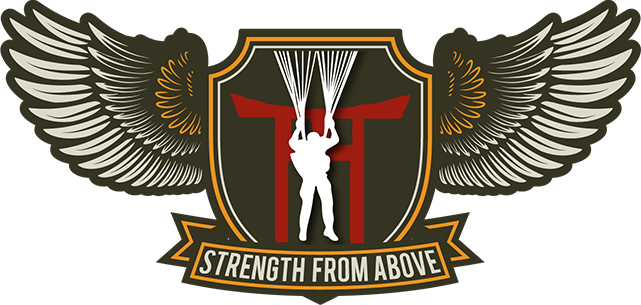
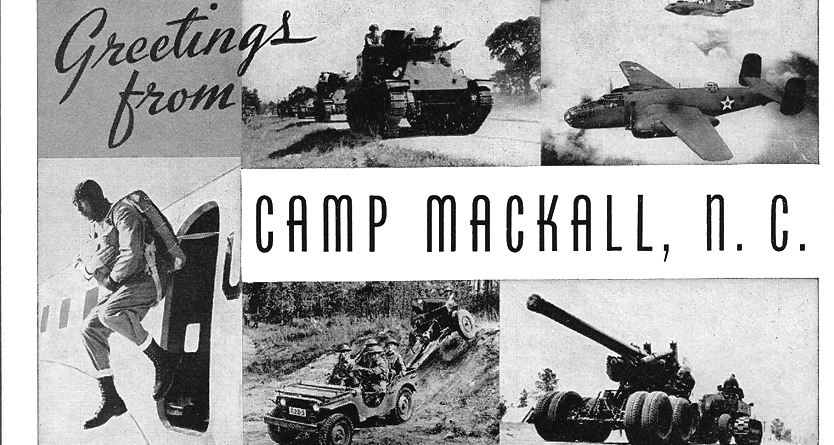
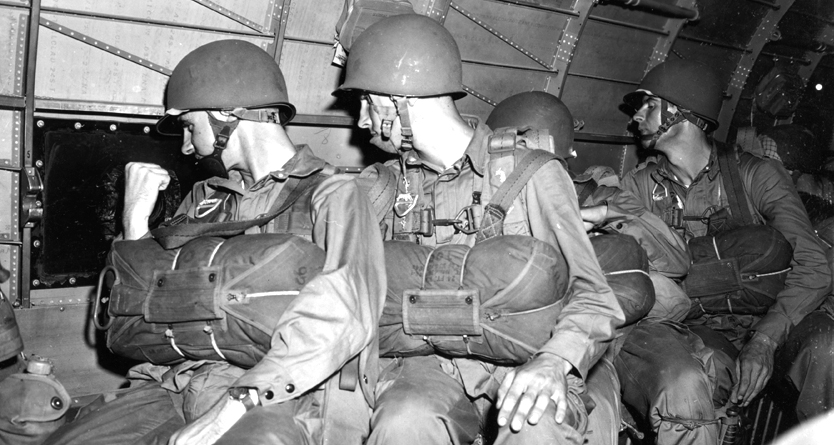

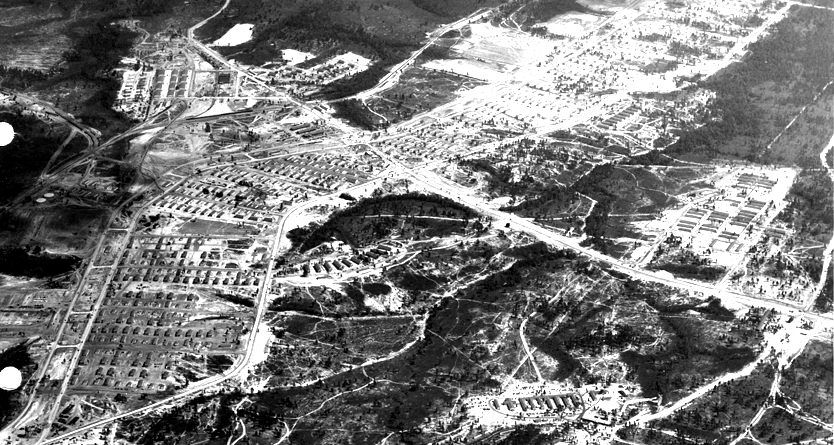
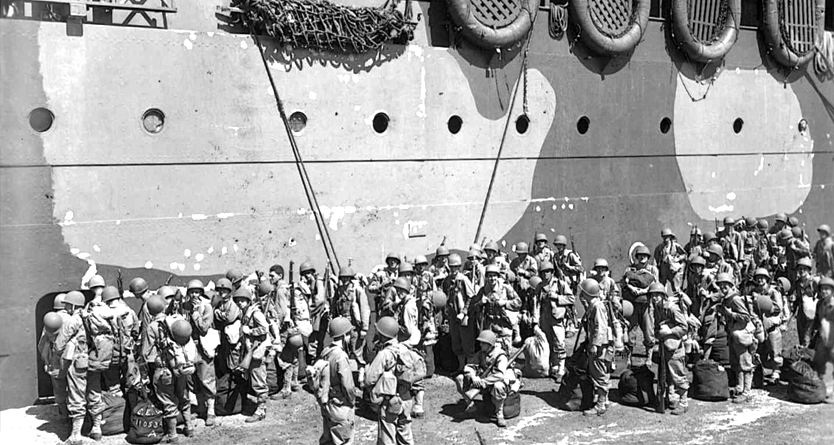
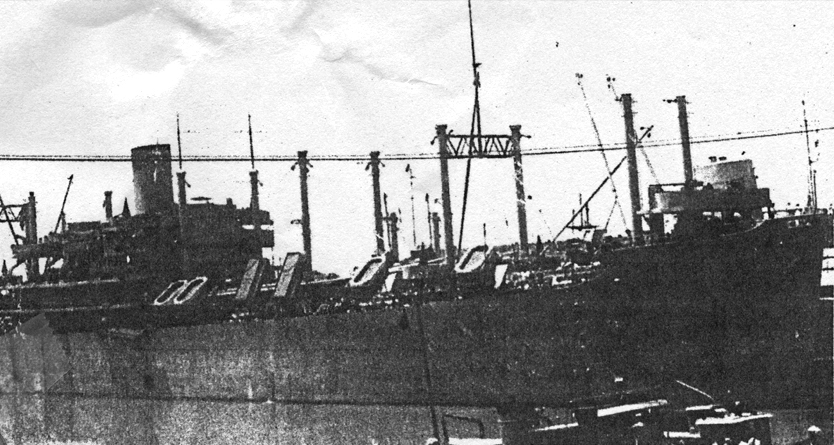
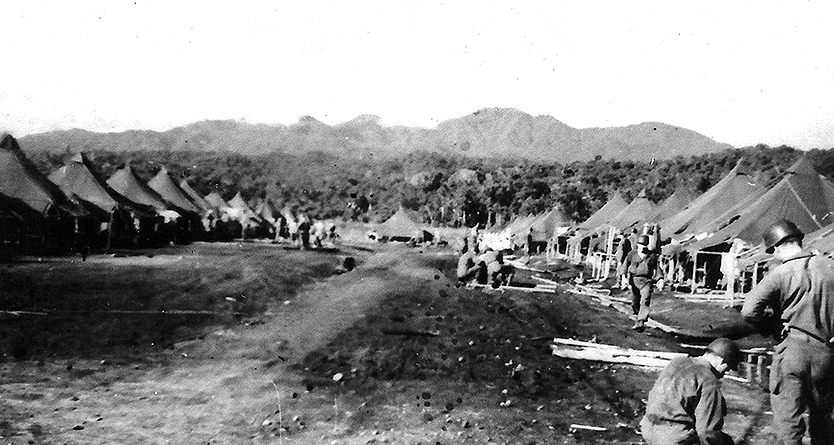
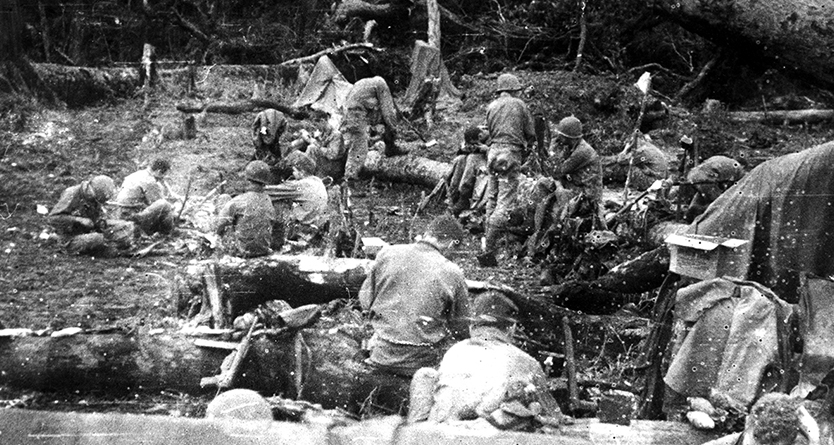
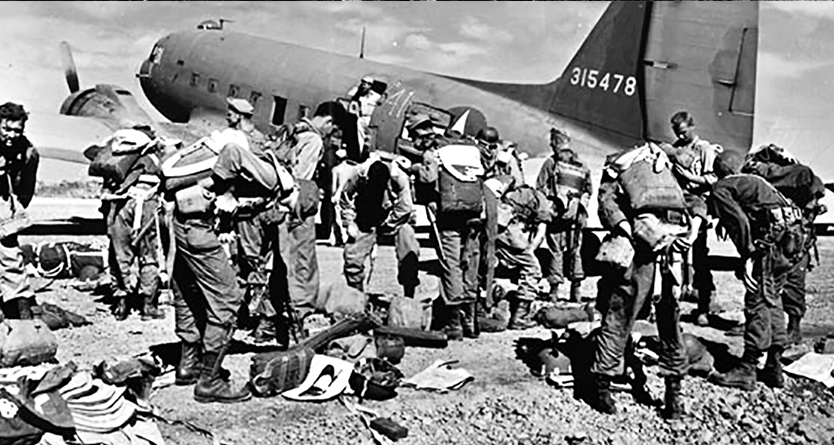
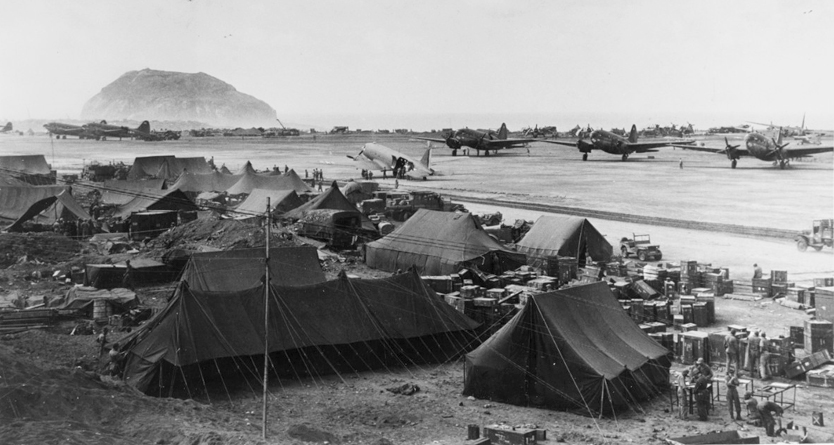

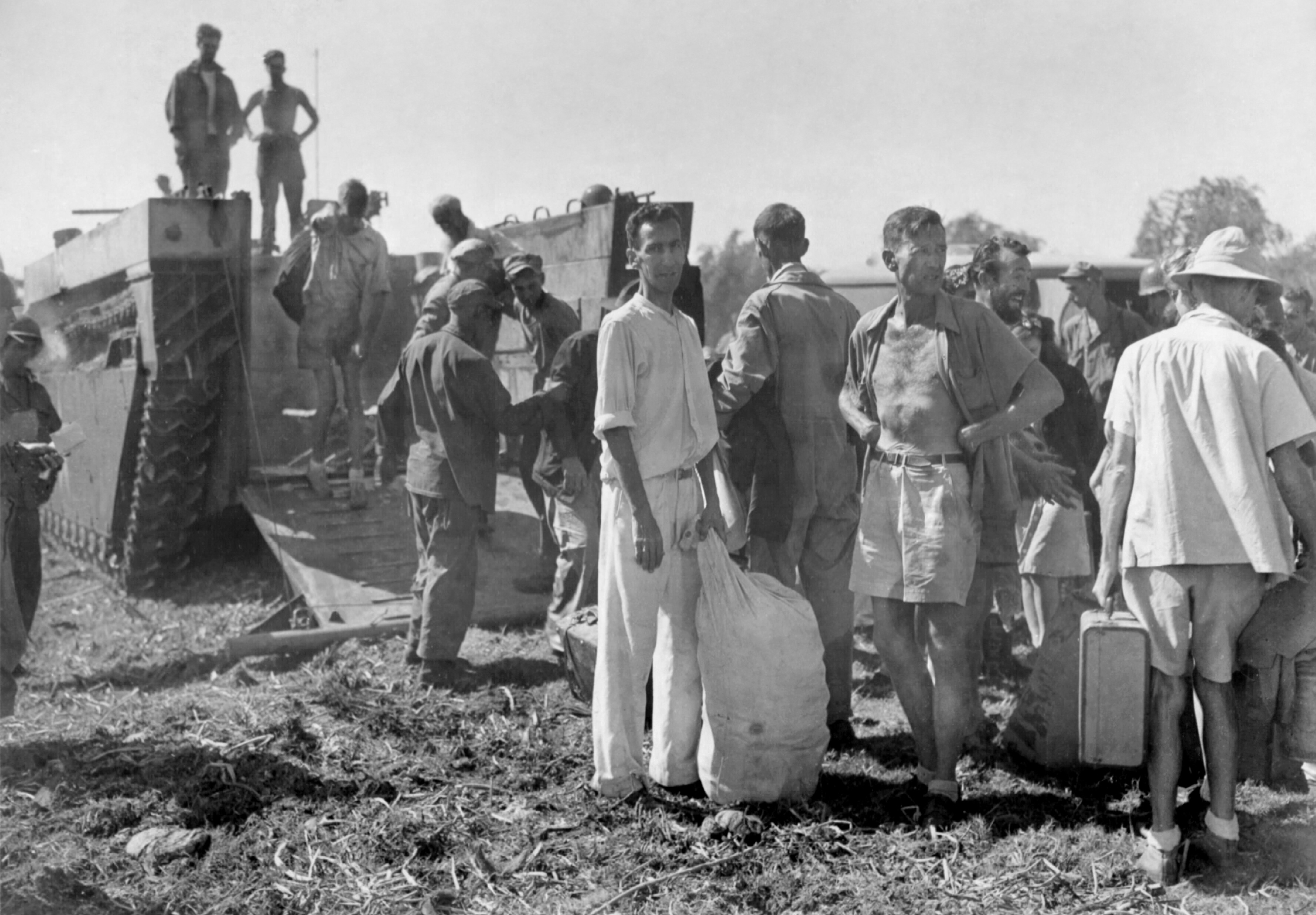 Note: This timeline is an attempt to cover the major aspects of this historic operation by date/time. It will not cover every facet or key player of the raid in detail for to do so would require (and has) an entire book. If you would like to read the full story of this mission, you may do so in my book,
Note: This timeline is an attempt to cover the major aspects of this historic operation by date/time. It will not cover every facet or key player of the raid in detail for to do so would require (and has) an entire book. If you would like to read the full story of this mission, you may do so in my book, 